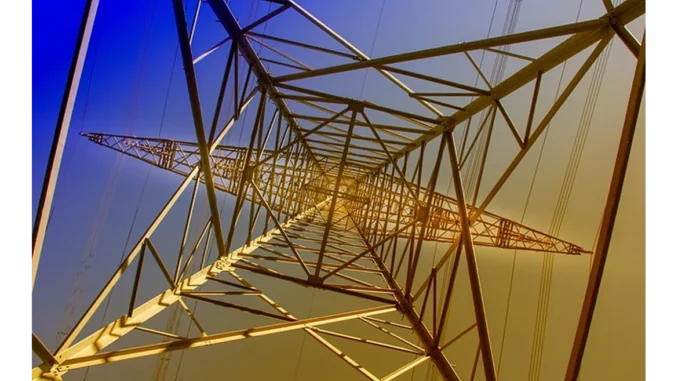
When I sat down with Rachel Turner, a Senior Environmental Consultant with over a decade of experience in infrastructure projects, I wasn’t quite prepared for the depth and intricacy involved in Cumulative Effects Assessments (CEA) for Nationally Significant Infrastructure Projects (NSIPs). Over a cup of coffee in her eclectic office, Rachel walked me through the labyrinthine process that underpins this essential aspect of environmental planning. Here’s a summary of our enlightening conversation.
Learn how Focus360 Energy supports Environmental Impact Assessments.
Starting with the Basics
“The guidance provided by the government and the Planning Inspectorate is crucial but can be overwhelming at first glance,” Rachel began. “It’s non-statutory, but it’s drawn from good practice, so following it is highly recommended. Applicants and stakeholders need to understand that this advice complements the existing legislation and regulations.”
Rachel emphasised the importance of reading the guidance alongside the Planning Act 2008 and the Environmental Impact Assessment (EIA) Directive. “The directive sets forth the requirement for cumulative effects assessment, which is integral to evaluating the environmental impacts of both public and private projects.”
The Four-Stage Process
Rachel detailed the four stages of the CEA process, which may seem straightforward but require meticulous attention to detail and constant iteration.
Stage 1: Establishing the Long List
“The first step,” Rachel explained, “is defining the Zone of Influence (ZOI) for each environmental aspect considered. This involves mapping out areas affected by factors like air quality, heritage, and ecology.” She highlighted that applicants should use GIS software to map these zones, making the process transparent and justifiable.
In Rachel’s experience, creating the long list involves a thorough desk study to identify existing and approved developments within the ZOI. “This isn’t restricted to similar types of projects; for example, an offshore wind farm would also consider other licensed activities within its ZOI.”
Stage 2: Establishing the Shortlist
Once the long list is established, the next step is to develop threshold criteria to create a shortlist. “This stage ensures that the assessment is proportionate and focuses on the most relevant projects,” Rachel noted. “The criteria should address the temporal scope, scale, and nature of the developments and other factors like the capacity of the environment to handle additional stress.”
Rachel pointed out that professional judgement plays a significant role here. “Sometimes a project below the threshold may still be included if its characteristics could give rise to significant effects.”
Stage 3: Information Gathering
After shortlisting, detailed information on each identified development is gathered. “This includes design, location, programme details, and environmental assessments,” Rachel explained. “The goal is to compile a comprehensive dataset that informs the final assessment.”
Stage 4: Assessment
The final stage involves the actual assessment of cumulative effects. “This is where all the gathered information is scrutinised to identify any significant cumulative impacts,” Rachel said. “The assessment should be as detailed as possible, but also proportionate to the information available.”
Rachel stressed the importance of documenting the entire process in the Environmental Statement. “This document is crucial for the examination and decision-making stages of the NSIP application. It’s not just a formality; it provides the evidence needed to make informed decisions.”
Interrelationships and Combined Effects
Rachel also touched upon the distinction between cumulative effects with other developments and the interrelationships between aspects of the proposed NSIP itself. “For example, how ecology might interact with hydrology within the same project needs to be assessed separately. This is often documented in a table within the Environmental Statement.”
Mitigation and Monitoring
“The Environmental Statement should also describe measures to mitigate any identified significant cumulative effects,” Rachel emphasised. “These measures should be realistic and enforceable, often secured through a requirement in the draft Development Consent Order.”
Rachel encouraged a collaborative approach to mitigation. “Where possible, applicants should work with other developers and relevant bodies to create holistic mitigation strategies. This not only ensures compliance but also promotes sustainable development.”
The Role of Professional Judgement
Throughout our conversation, Rachel repeatedly highlighted the importance of professional judgement. “While the guidance provides a structured approach, each project is unique. The ability to apply professional judgement allows for flexibility and ensures that the assessment is both thorough and proportionate.”
Final Thoughts
As our conversation wrapped up, Rachel reflected on the broader implications of CEA in NSIPs. “It’s a complex but necessary process. Properly conducted, it helps balance the benefits of infrastructure development with the need to protect our environment. It’s about making informed decisions that consider both immediate and long-term impacts.”
Walking away from our meeting, I was struck by the sheer complexity and importance of CEA in the realm of NSIPs. Rachel’s insights underscored the meticulous planning and professional judgement required to navigate this essential aspect of environmental assessment. For anyone involved in national infrastructure projects, understanding and applying this guidance is not just a regulatory requirement but a crucial step toward sustainable development.
By Lewis Davis


Be the first to comment